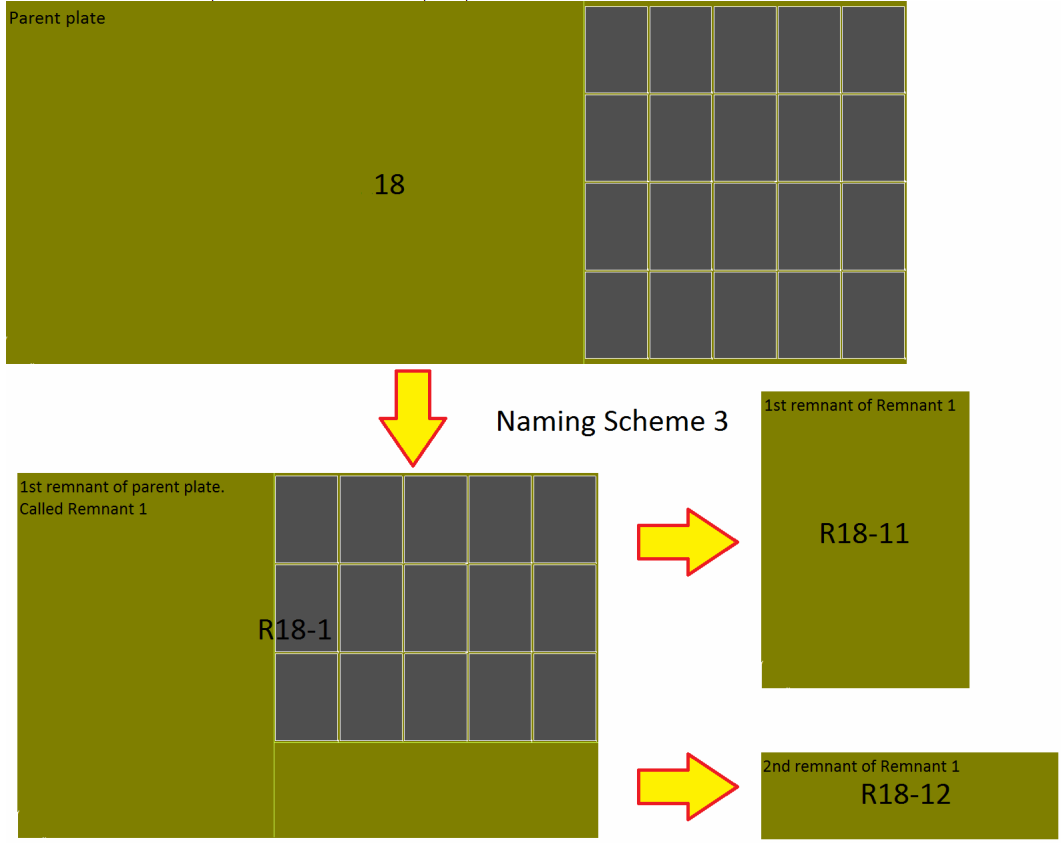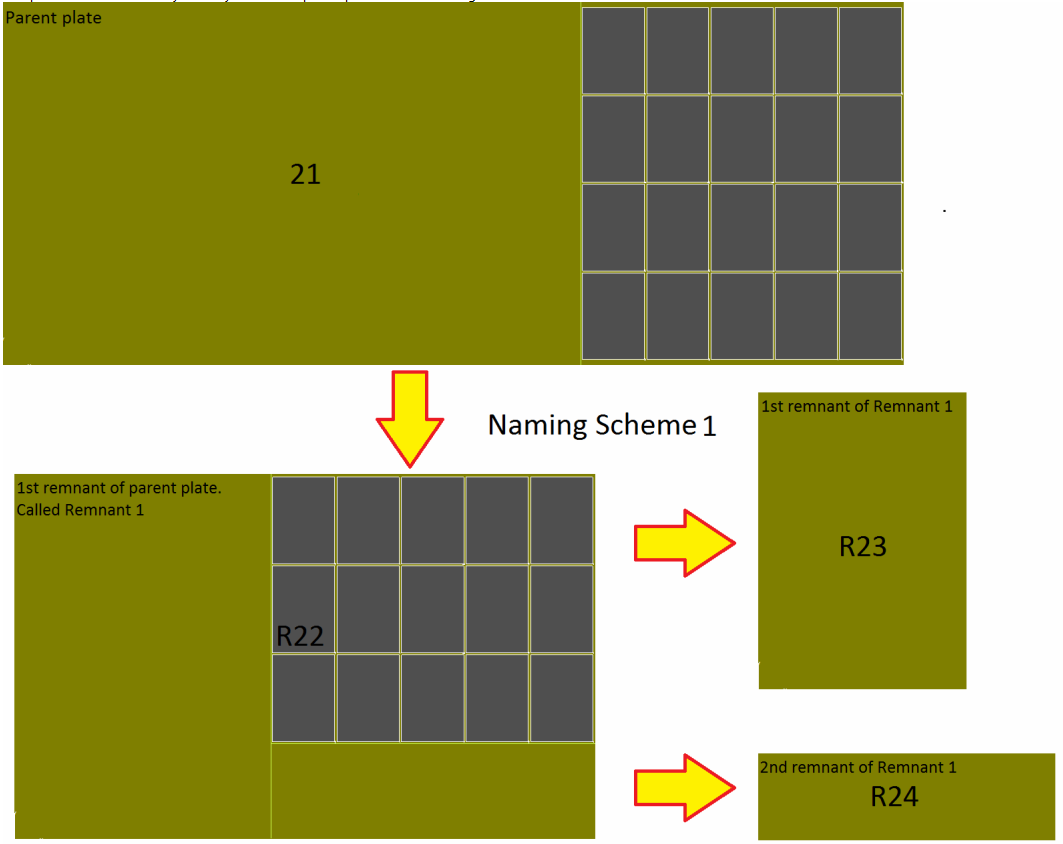There are three choices of naming scheme that can be used to refer to remnant plates. Kinetic recommends to use scheme three which will be covered in the most detail.
The naming scheme can be changed in the plate tab of the Global Settings mode which is accessed from the home page. These evolved over the years, so the 3rd one is what we consider to be the best:

Remnant Naming Scheme 3 (Recommended) Copy Parent and Append Seq Number will prepend an 'R' before the parent plate ID an also append a sequence number according to the following system: -0 always refers to the skeleton. -1 refers to the first remnant of the parent plate where as -2 would refer to the second remnant of the same parent plate.
As it is possible to have remnants of remnants the system accounts for this by using an additional digit in the sequence number. For example R1-12 would refer to the second remnant generated from the first remnant of the parent plate and R1-10 would refer to the skeleton of the parts cut on the first remnant of the parent plate.

When cutting thicker plates or one off parts at a time it is common to leave the plate on bed and repeatedly nest on the skeleton rather than making a cropping cut for each part. In this case the naming convention will be R[parent plate ID]-0 and each consecutive nest will still produce a -0 sequence number and not -00 or -000 etc. This is because we are still nesting on the exact same plate according to PrimeCut NE. Such an example is illustrated below.

When reconciling each NC program it is important to keep the skeleton remnant otherwise PrimeCut will remove the plate from the database (as it thinks it is an exhausted skeleton when really there is still plenty of area left). The keep skeleton remnant option can be ticked under the plate tab in the Global Settings ( Global Settings: Plates ).
Remnant Naming Scheme 2 will name remnant plates to be the same as the parent plate however with a preceding 'R' before the parent plate ID. The downside of this scheme is when there are multiple remnants generated from a parent plate as they will all be named the same.
Naming scheme Two is good when there is only likely to be one remnant at a time but becomes difficult to distinguish when there are multiple remnants:

Remnant Naming Scheme 1 will name remnant plates with a unique plate ID as if it were a new full plate.
Naming Scheme One is simple but we lose the ability to easily track which parent plate the remnant originated from:

See also
Defining Offcuts with Crop Lines
Requirements for a Crop to Define an Offcut
Crop Editing: Moving Crop Nodes